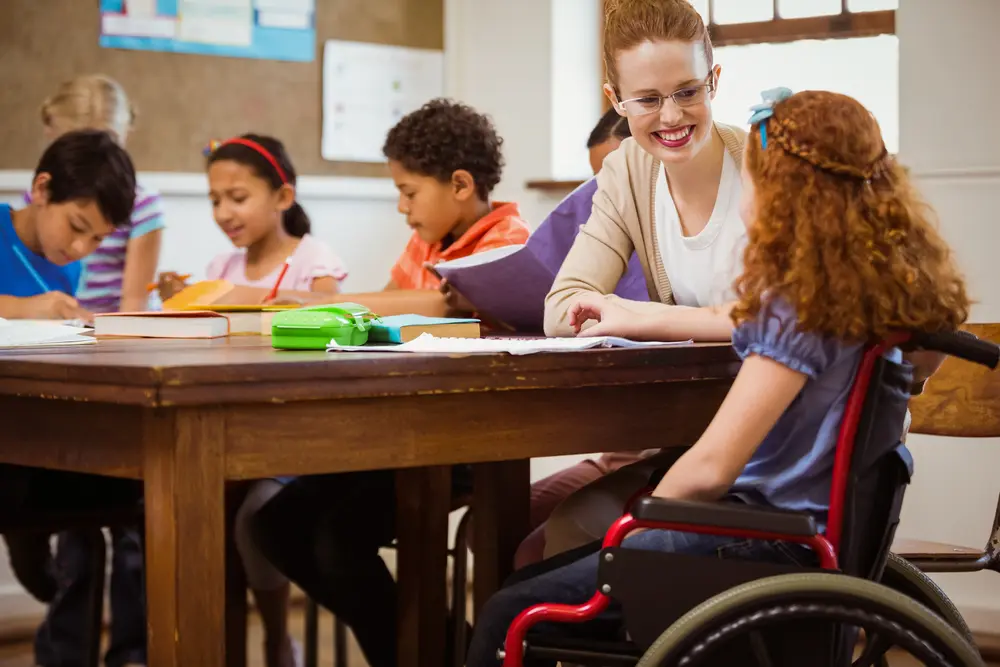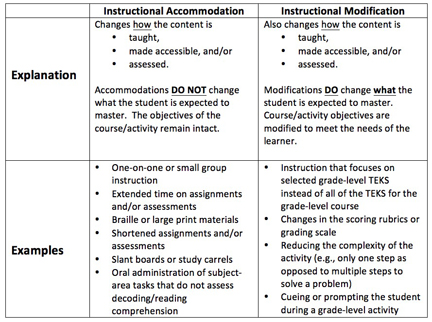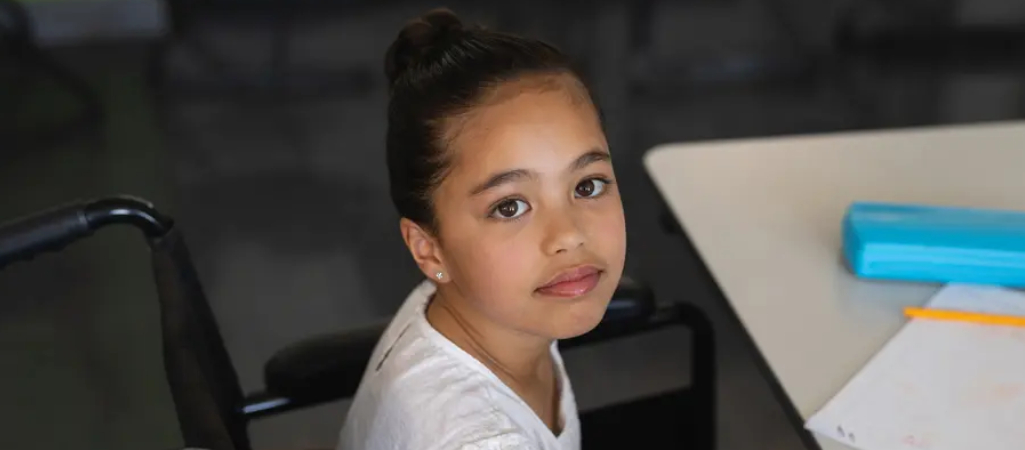Equal educational opportunities, especially for children with disabilities, depend on schools being accessible and accommodating to their needs.
Disabled children may face additional difficulties in the classroom if they are not provided with appropriate modifications. They lead to worse academic performance, decreased self-esteem, and fewer potential employment prospects.
But what exactly is school accessibility, and why is it important?
Understanding School Accessibility
The term “school accessibility” refers to the potential difficulties children with disabilities may encounter while attending school.
An accessible school can be attended by any student, regardless of their physical abilities, financial situation, or social standing.
The availability of educational resources and opportunities, such as computers, activities, and qualified teachers, is also a part of what is meant by “accessible schools,” ensuring that all students can get an appropriate education.
Physical accessibility, digital accessibility, and curricular accessibility are the three basic categories under which accessibility in schools may be generically classified.
Physical Accessibility
Physical accessibility refers to the ease with which students can move around a school campus, regardless of their physical ability.
Wheelchair ramps, elevators, handicapped-accessible facilities, restrooms, and reserved parking spots are all features that fall under this category.
It also entails designing classrooms and other school spaces to accommodate students with physical disabilities.
The video shows students like Miguel, Emma, Jacqueline, and Josh with varying abilities and struggles to find an accessible school.
Digital Accessibility
Since the use of technology in the classroom is on the rise. It is essential that all students, regardless of ability, have access to digital resources. It includes making digital material accessible to people with sensory, motor, cognitive, and mental disabilities to be perceived, operated, understood, and used effectively.
Features like closed captioning for movies, support for screen readers, the use of keyboard shortcuts, and accessible PDFs are all examples.
Doug Campbell, a special needs professor at the University of Indiana, says, “Digital accessibility has many benefits, such as communication, academics, and self-paced learning.” It has opened up a world to special needs students, allowing them to use keyboards, audiobooks, and self-paced learning and make their needs, wishes, and thoughts known.”
Curricular Accessibility
The term “curriculum accessibility” describes how well a school’s curriculum accommodates students with varying abilities. Examples include extra time on tests, access to assistive technology, and adapted assignments.
It also entails ensuring that the curriculum is culturally appropriate and welcoming so that students from many backgrounds feel represented and interested in their studies.
Universal Design for Learning (UDL) is an educational framework for curriculum accessibility that ensures all students have equal access to learning opportunities, regardless of their learning requirements and abilities.
UDL does this by creating flexible and adjustable learning environments to suit the needs of individual students.
One of the basic concepts of UDL is the understanding that there is no one-size-fits-all approach to learning and that each learner has unique talents, interests, and requirements.
With Universal Design for Learning, instructors can be assured that their instruction and practice will be accessible to students of all abilities. For students who are deaf or hard of hearing, Universal Design for Learning could entail making text-based resources available in alternate formats like audio recordings or braille versions.
A short video explaining the use of curricular accessibility and UDL.
An example of such a school is Pittsburgh, Pennsylvania’s PACE School, which educates students with physical and intellectual disabilities in grades K-12. The school provides various services and programs, including occupational therapy, physical therapy, and speech therapy.
UDL can benefit all students, not just those with disabilities or special needs, by providing multiple methods to learn, express themselves, and interact with the subject matter. Educators can create an inclusive and equitable learning environment that promotes the success of all students by employing UDL principles.
Accommodations in Education
Educational accommodations are changes made to a student’s classroom, curriculum, or evaluation procedures to meet their requirements better. Accommodations are essential for students with impairments or special needs, but they can also benefit students without disabilities who may need additional assistance.

Accommodations Vs. Modifications
Both approaches are designed to improve children’s performance in school, but they differ in significant respects.
Accommodations are adaptations made to the learning environment or instructional strategies to assist students with disabilities in accessing and participating in the same curriculum as other students.
They do not alter the student’s content or learning expectations; instead, they eradicate barriers to learning. For instance, a student who struggles with reading may be given an audiobook or extra time to complete reading assignments as an appropriate adaptation.
Modifications, however, entail altering a student’s content or learning objectives. Even with accommodations, changes are made when a student’s disability hinders them from achieving the same learning objectives as other students.
For instance, a modification for a student with difficulty with math could provide a different set of math problems that are easier and more manageable for the student.
The video above explains accommodation and modification. At 1:52, the video shows how to modify and accommodate a mathematical problem.

Types of Accommodations
Numerous accommodations can be made to assist disabled students in their education. Even the research suggests that accommodations can positively affect the academic performance of students with disabilities.
Here are some prominent examples:
Extended time
An extended accommodation period allows students to finish their studies or examinations with more time. It can particularly benefit students who struggle with quick thinking, concentration, or motor skills.
As the Journal of Learning Difficulties reported in a study, students with learning difficulties who received additional exam time performed much better than those who did not.
Reduced distractions
Some students who are disabled may struggle with classroom distractions, but having a distraction-free environment can help students with disabilities concentrate.
Providing them with a peaceful work environment or noise-canceling headphones can help them focus.
Students easily distracted by visual stimuli may benefit from a learning environment with minimal visual distractions created by removing unnecessary objects and using visually basic materials such as worksheets and textbooks.
Preferential seating
Sitting at a specific spot in the classroom may be helpful for students who have hearing or vision difficulties. Research has shown that preferred sitting is a good way for schools to help students with disabilities.
For example, a student with hearing loss may benefit from sitting in the front row, or students with attention or behavioral difficulties may benefit from sitting away from distractions or near the teacher for increased supervision.
Note-taking assistance
Students with physical or cognitive impairments may need assistance taking notes. As the Journal of Postsecondary Education and Disability found, disabled students who received note-taking assistance had higher GPAs.
It can be accomplished with the assistance of a notetaker or a specialized tool, such as a Livescribe stylus.
Individualized Education Plans (IEPs)
Individualized education programs (IEPs) are written for kids with special needs and include many changes and aids to help them succeed in school. Extended testing time, customized software, and other accommodations are all possible components of these programs.
Many educational institutions in the United States use IEPs to help students with special needs, such as The Lab School of Washington, The Churchill School and Center, and The Frostig Center. These institutions are highly specialized and employ various methods to develop unique programs for students with learning problems, visual impairments, and other disabilities.
Use of Assistive Technology
Research has proven that assistive technology improves learning achievement and independence for disabled students.
Text-to-speech software, speech-to-text software, and specialized computer hardware are examples of the numerous varieties of assistive technology available to learners with disabilities.
The video shows a real-life example of a student named Alex and how he benefited from using assistive technology.
Alternative Format Materials
Materials in alternative formats, such as Braille, large print or underlined worksheets, or audio, may be necessary for students with visual impairments or specific learning disabilities.
In the video, Samantha, a special education activist, shares modifications that can be helpful for special needs children, such as larger prints, visual and verbal cues, etc.
The Importance of Disability Awareness in Schools
Increasing society’s awareness of and acceptance of people with disabilities is a crucial goal of disability awareness initiatives. Its awareness is essential for several reasons.
First, raising awareness of disability can help reduce stigma and discrimination against individuals with disabilities.
Evidence shows that people with disabilities are more likely to encounter rejection and discrimination in various settings, including educational institutions, workplaces, and healthcare facilities. All of it can lead to social isolation as well as discrimination. Learn more about the social and mental impacts of young people in wheelchairs here.
Promoting disability awareness, we can contribute to developing a more accepting and inclusive society.
Second, raising public consciousness about disabilities might facilitate greater inclusion of those with such impairments. Persons’ willingness to make accommodations and offer assistance for those with disabilities increases when they better understand the difficulties that persons with disabilities encounter.
For instance, research published in the Journal of Postsecondary Education and Disability indicated that educators who received disability awareness training could better assist students with impairments.
Third, raising general awareness of disabilities might encourage more support for and self-advocacy from those who are disabled. It is easier for people with disabilities to advocate for themselves and get the help they need when they know their rights and where to get them. For instance, self-advocacy research published in the Journal of Vocational Rehabilitation has been shown to boost career prospects for people with disabilities.
Students with and without disabilities can both greatly benefit from an inclusive learning environment. Research-backed advantages and helpful examples of implementation are provided below.
- Improved academic performance: Students with disabilities who are integrated into regular classrooms typically perform better academically and are more invested in their education. In addition, research shows that students of all abilities benefit from the inclusive learning environment. To accommodate students with varying learning styles, schools can adopt approaches like Universal Design for Learning (UDL), which encourages various strategies for students’ representation, expression, and engagement.
- Better and Positive Social Interactions: Inclusive education allows students with and without disabilities to learn from and teach one another, fostering the growth of positive interpersonal and social skills. In addition, kids who do not have a disability are exposed to information that can help them develop compassion and understanding for those who do. Schools might host social events and activities to encourage diversity and participation from all students.
- Increased self-esteem and confidence: When children with disabilities are accepted and encouraged at school, they are more likely to feel good about themselves and their abilities resulting in improved mental health and enhanced independence. So even children with special needs should receive appreciation from their teachers for their efforts and accomplishments.
Annie Clark is a real-life example, an activist and a wheelchair user with arthrogryposis who attended an accessible NYC school. The school provided her with the necessary accommodations, such as a personal assistant to assist her with physical duties and ramps to access all building areas. She went on to co-author a book about her experiences, entitled “Nobody’s Perfect.”
- Legal compliance: Creating an inclusive school environment is advantageous and legally mandated. The Individuals with Disabilities Education Act (IDEA) demands that students with disabilities access a free, appropriate, and least restrictive education. Failure to provide this information may result in legal action.
Strategies for Improvement
Educators, students, and parents must be made aware of disabilities to create an inclusive and supportive learning environment for students with disabilities. The following strategies can be implemented:
Professional Development: There must be professional development opportunities for educators to learn about disabilities and how to support students with disabilities in the classroom. It can include training on particular disabilities, strategies for accommodating diverse learning requirements, and materials for creating inclusive classrooms.
Many organizations and resources train educators, such as the Council for Exceptional Children (CEC), the Center for Applied Special Technology (CAST), and Understood.org.
Disability Awareness Programs: Schools may launch disability awareness programs to educate students, instructors, and parents about disabilities.
Activities in these programs may consist of having speakers talk about their experiences with disability, holding seminars in which participants actively participate, and so on.
The “Spread the Word to End the Word” campaign is a national endeavor to end the derogatory use of the term “retard” in the United States. The campaign encourages students to commit to using respectful language and promote the inclusion of individuals with intellectual and developmental disabilities.
Ways Parents Can Help Raise Awareness:
Even parents may be an integral part of schools’ efforts to raise awareness about disabilities. Schools invite parents to conferences or seminars, or they can host their own, to explore how to aid kids with special needs best.
They can also advocate for inclusive policies and practices, educate others about disabilities, promote open communication with school administrators and instructors, and model inclusive behavior at home and in their communities.
Peer Mentoring Programs: Schools can establish peer mentoring programs where students with and without disabilities collaborate on projects and assignments. This can help break down barriers between students with and without disabilities and increase their mutual understanding.
Several national organizations, such as Big Brothers Big Sisters, Best Buddies, and the National Mentoring Partnership, offer peer mentoring Programs for schools.
Implementing Inclusive Practices for Equal Opportunities in Learning
Inclusive education strategies ensure all students have equal learning opportunities, and that is where school policies come in to implement inclusive practices.
Role of school policies
Policies and procedures of the school play an essential role in promoting equal opportunities for all students. These policies and procedures establish the framework for school operations and outline how students should be treated.
Here are some ways that school rules and methods can help ensure everyone has the same chances.
- No Discrimination Policy: Schools should have policies prohibiting discrimination based on race, ethnicity, gender, sexual orientation, religion, and disability. Even the staff recruiting and treatment should follow these policies.
such as the “Special Education Procedural Handbook,” which covers identifying and serving children with disabilities, including accommodations, IEPs, and transition planning.
- Accommodations and Modifications: Schools should have in place policies and procedures for providing modifications and accommodations to students with disabilities and other cognitive differences by involving the provision of assistive technology, additional exam time, or alternative assessments.
- Inclusive Curriculum: The curriculum in schools should be open to all students and reflect the student body’s demographics.
The Inclusive Schools Network is a perfect example of a chain of schools in the US providing support for schools that are working to create inclusive learning environments.
- Equity in Discipline: Schools must establish policies and procedures that promote fairness and equality in disciplinary practices. Discipline can be accomplished by instituting restorative justice practices, training staff on implicit bias, and promoting positive behavior supports, among other methods.
Conclusion
The most important aspects of promoting equal learning opportunities are school accessibility, educational accommodations, and disability awareness.
Schools must ensure that all students, including those with disabilities, have equal access to their facilities, resources, and services and that adjustments are made in the classroom.
Educators, students, and parents should be educated about disabilities to create a more inclusive and welcoming learning environment. By implementing these practices, schools can ensure that all students have equal opportunities for academic success and growth.

